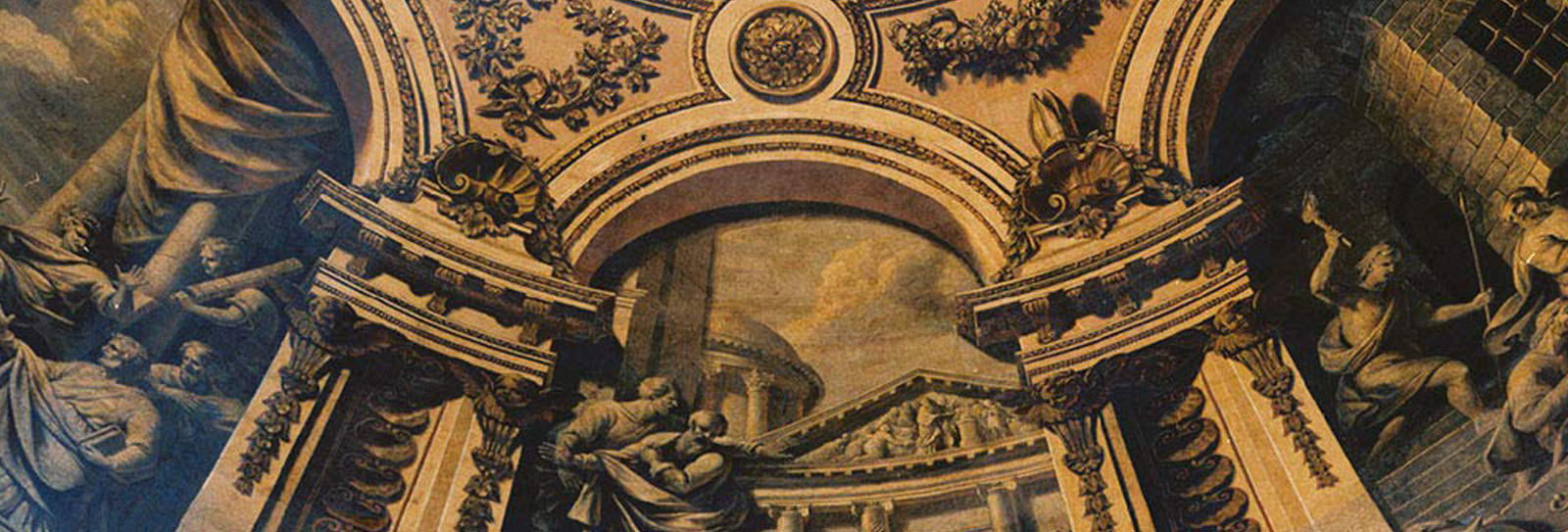
On the Origins of Gothic Architecture: A Conversation with Diana Darke
- Arts
- History
3
Interview by Tom Verde
With its rose windows and soaring, pointed arches, Gothic architecture is a crowning achievement of medieval Western Christendom but not, writes Oxford-educated Arabist Diana Darke, an independently developed one. Rather, what came to be called Gothic "arose out of a succession of influences that started in the Middle East and Muslim Andalusia," she writes in Stealing from the Saracens, whose title highlights the book's central irony: Medieval Europeans applied the term Saracen, from the Arabic saraqa, "to steal," generally to Muslims. A nonresident scholar with Washington DC's Middle East Institute, Darke has spent decades working and traveling throughout the Middle East. She has written several guidebooks and lived off and on since 1978 in Syria, where in 2005 she bought and restored a traditional courtyard house in the Old City of Damascus. This experience, coupled with her travels, inspired interest in the region's role as the cradle of Gothic architecture. She traces the Gothic's origins to three key structural elements-the trefoil arch (with its trio of interlinking cusps at its apex), the pointed arch, and elaborate ceiling vaulting that migrated west between the eighth and 11th centuries CE.
How did the trefoil arch, the pointed arch and complex vaulting get to the West?
Abd al-Rahman, who was born in Syria in the eighth century and became founder of the Muslim Umayyad dynasty in what is now southern Spain, introduced the trefoil arch into the European mainland. When you look at the Cordoba Mezquita and the arcade of trefoil arches above the mihrab, you can see exactly how that was then copied and used farther north in Spain and southern France. The pointed arch seems to have been copied from the ninth-century-CE lbn Tulun Mosque in Cairo and came in via Amalfi [Italy], and then made its way to Cluny [in France], the wealthiest monastery in Europe. Then the other absolutely major one is the geometrical vaulting of the ceilings, which again comes in the Cordoba mosque, in the astonishing dome in front of the mihrab which has never needed any structural repair in its entire thousand-year existence. That level of craftsmanship combined with the knowledge of geometry that Muslim masons inherited from centuries of stone-masonry tradition in Syria led to this astonishing knowledge of geometry that was completely lacking in Europe at the time.
Who were other key characters in this transmission? Merchants, crusaders, craftsmen, clerics?
It pretty much was all of them. Irish monks were sent off to Syria to learn about monastic architecture and came back and built [religious structures] in England and Ireland. The crusaders actually were the least influential. Most of the elements of Gothic had already found their way onto the European mainland before the Crusades.
The verticality of Gothic is famed for saturating religious interiors with light. Were there similar esthetics at work in Islamic architecture?
Islamic architecture is not particularly interested in verticality, but it is interested in light and the way that light enters a building. The other major thing is the different sense of space, and you see this quite clearly in the Cordoba Mezquita. The fact that there is no beginning and no end, it's a sense of infinitely multiplying arcades and you never quite know where you are. There is the mihrab giving the direction of Makkah, but there is no sense of hierarchy within the building, whereas the thing that really strikes you in Gothic architecture is the hierarchy. There's no doubt about where the important bits of the church are up by the altar.
You devote an entire chapter to Restoration-era English architect Christopher Wren. Why?
Wren wrote at the end of his life that he used "Saracen vaulting," as he called it, in the dome of St. Paul's Cathedral in London. He had the theory that "what we call the Gothic style should rightly be called the Saracen style." He was happy to take the best of whatever he could find wherever he could find it, and he explained in his memoirs why he used Saracen vaulting: because it was the best.
You may also be interested in...

Covering 75 Years of Arts & Culture
Arts
Sharing connections in the arts and cultural heritage is reflected in AramcoWorld's cover stories about architecture, visual arts, photography, music, literature and more.
A Life of Words: A Conversation With Zahran Alqasmi
Arts
For as long as poet and novelist Zahran Alqasmi can remember, his life in Mas, an Omani village about 170 kilometers south of the capital of Muscat, in the northern wilayat (province) of Dima Wattayeen, books permeated every part of his world. “I was raised in a family passionate about prose literature and poetry,” Alqasmi recalls.
First Look: The Color of Nubia in Aswan
Arts
As a Saudi photographer with a passion for cultural, human and heritage themes around the world, I strive to make my images windows to the past as well as reflections of the present. When I came across this guesthouse on a visit to Aswan, Egypt, I was taken back to 3000 BCE to ancient Nubia.

